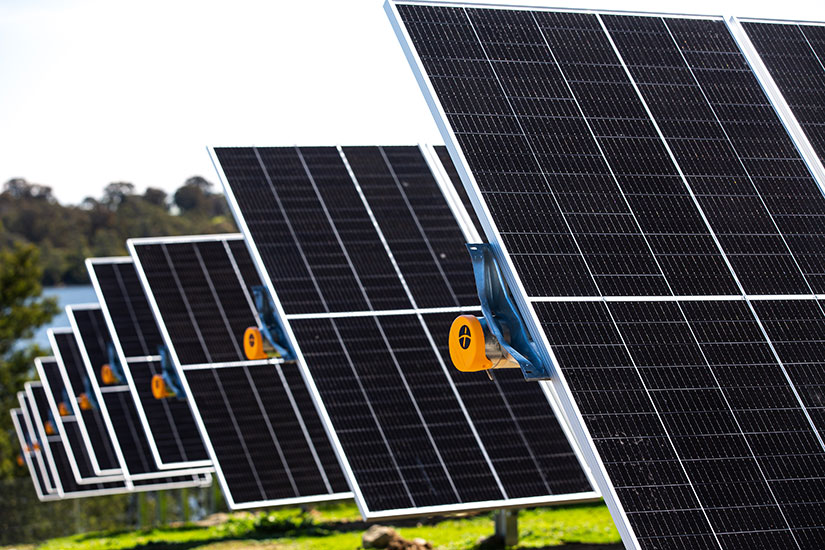Nextracker and NREL Partnership Inspires New Look at PV Tracker Industry Design Standards
How High-Wind Measurements Collected From NREL Flatirons Campus Solar Array Are Informing Reliable Design

There is an old saying: You cannot change the wind, but you can always change your sails.
Over the past year, the National Renewable Energy Laboratory (NREL) and industry partner Nextracker teamed up to advance the reliability of photovoltaic (PV) tracker technologies during severe weather events.
What they discovered is already blowing down previously accepted industry design standards.
PV trackers move and adjust to directly face the sun throughout the day. The technology enables solar cells to absorb more energy and generate more power than static array designs.
However, as climate change triggers more frequent and severe weather, PV trackers are getting damaged.
NREL Researcher Scott Dana said Nextracker moved quickly to collaborate after attending the Department of Energy’s Durable Module Materials Consortium (DuraMAT) workshop in 2020. The event featured useful and surprising new high-fidelity PV tracker measurements.
“For nearly half a century, NREL has stood as one of the world’s premier PV testing labs, and we chose NREL for this reason,” said Alex Au, Nextracker’s chief technology officer. “NREL has been a consistent and unbiased world-renowned laboratory for us to conduct the rigorous testing our customers know us for.”
Nextracker then built, and NREL experts instrumented, two different self-powered PV tracking systems, the NX Horizon and the NX Gemini, across 3.5 acres on the NREL Flatirons Campus—home of the National Wind Technology Center—for a large-scale study regarding the impact of severe weather on the equipment.
“The point of the project is about reliability and storm hardening. It’s about ensuring these systems will produce power even after a major storm,” Dana said. “It’s super critical because when everything goes down, that’s when you need power the most.”
Dana said the experiment proved very successful for everyone involved in the partnership. Not only did Nextracker gain valuable measurements of PV trackers in high-wind environments, but NREL researchers also gained more experience adapting wind turbine research expertise to the project.
“Trackers are a machine that moves to follow the sun, and there are some pretty interesting dynamics and aeroelastics, which is at the heart of the wind turbines—understanding and validating their aeroelastics,” Dana said. “The partnership really expanded our capabilities and showcased beyond what we initially had achieved. We are really experienced and a solid team to do this kind of work.”
The trackers will remain installed at NREL until 2024, he said, which leaves time for even further high-wind data collection.
Arlinda Huskey, Manufacturing and Characterization group manager at the NREL Flatirons Campus, said the measurements taken throughout the project are also proving helpful on a larger scale.
“There were assumptions about the wind loading designs on these trackers, and some of those assumptions changed after they took measurements here,” she said.
Dana said the overall takeaway from the project is industry design trends for PV trackers should be up for further review, which could lead to major product development changes.
“As far as I know, no other big industry player has done anything like this. Nextracker is using the results of the experiment to start a strong dialogue about what the design standards for PV trackers should be,” he said. “They have information and data that no one else has. The measurements they are collecting with NREL are really helping to support a strong narrative on why the building code standard is not sufficient. It’s really an industry–wide conversation. It’s definitely born out of the work at NREL.”
Get updates from the laboratory's monthly wind energy newsletter, The Leading Edge, and learn more about how to work with NREL wind energy researchers.

